#u.s.s.r. actor
Text
In the Soviet factories and collective firms much of the leisure time of the people — and this leisure time is ample since the working day averages less than seven hours throughout Soviet industry — is spent on amateur activities such as dramatics, literature, sport, photography, art, and so on.
But these amateur activities are not, as is usual in other countries, left to the care of the local enthusiasts, without professional assistance. For, in all Soviet amateur activities, the professional people in that particular sphere render organized assistance, so that the general level of the amateurs is raised so as rapidly to approach a professional standard.
A typical example of this is theatrical work. Practically every industrial enterprise in the U.S.S.R. has its workers’ dramatics circle. Agreements are made through the trade unions with professional theaters, and these promise to give assistance to such circles in the form of voluntary or paid help by trained actors and producers. The result is that the amateur group has the benefit of professional assistance, and can raise its standard of excellence considerably above that which in this country we term “amateur,” meaning inferior to “professional.”
Such an “amateur” dramatics group in the U.S.S.R. may at any time, having reached a certain standard, be offered by the authorities the opportunity of taking over a professional theatre as a full-time job. I have been present at a competition of village theaters in Moscow and seen a performance by a young theatrical group which was certainly up to the best British repertory standard. The whole company consisted of young working men and women who had previously been members of the dramatics club of the automobile plant in Gorky. They had received professional guidance from the Vachtangov Theatre in Moscow, and, at a certain stage, had been offered facilities by the Commissariat of Education to become a full-time theatrical company. They now had their own theatre in a Russian village. In this way workers in the factory had become professional actors and actresses, through their amateur theatricals.
Just as in the sphere of the theatre there is an opportunity for the ordinary amateur to become a professional, so, too, in painting and writing, in sport and in science.
Pat Sloan, Soviet Democracy, 1937
#communism#socialism#leftism#anti capitalism#marxism#soviet union#ussr#history#ussr history#soviet history
59 notes
·
View notes
Text


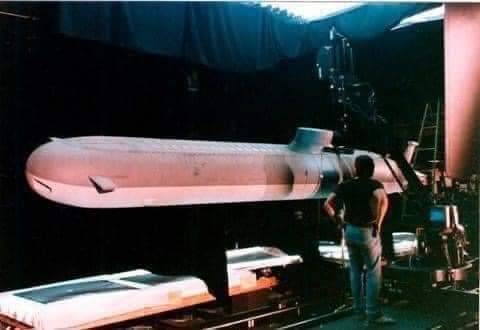



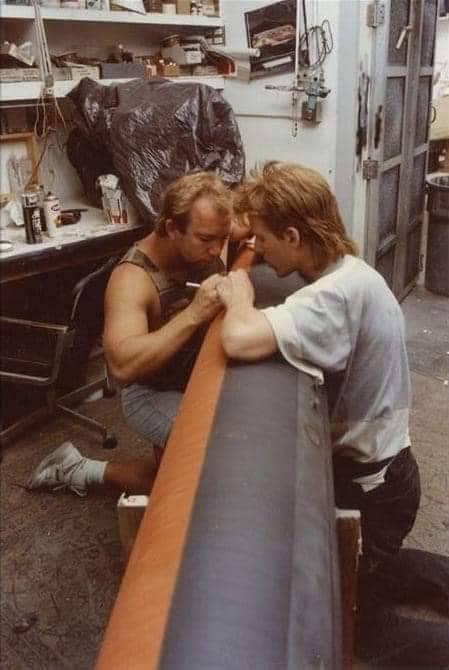


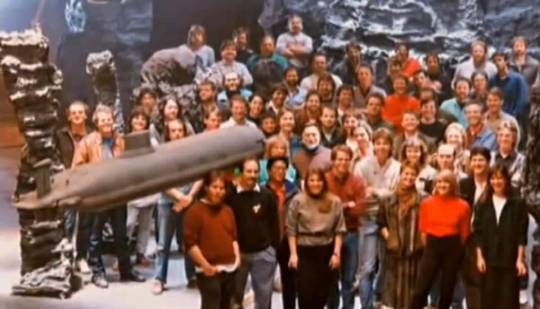
On this date in 1990 “The Hunt For Red October” was released!
Capt. Borodin: “The crew know about the saboteur. They are afraid.”
Marko Ramius: “Well, that could be useful when the time comes.”
Director:John McTiernan
1st AD:Jerry Ballew
Cinematographer:Jan de Bont
Camera operator:Roger Gebhard
1st AC:Cal Roberts
Production Designer:Terence Marsh
Gaffer:Ed Ayer
Key grip:Larry J. Aube
Dolly grip: Michael J. Coo
This is one of my favorite movies so today we’re going on a deep Dive! Dive! Dive! on how this group of dedicated filmmakers brought this movie to life.
The producers originally wanted Kevin Costner for the lead, but Costner had other ideas.
As producer Mace Neufeld explained in a behind-the-scenes DVD feature, "I'd gotten quite friendly with Kevin Costner, and I went to Kevin about playing Jack Ryan. But Kevin was up to his neck, and very enthusiastic, about doing this ... this buffalo movie. And I said, 'You'd rather do a buffalo movie?'".
This was Alec Baldwin’s first big budget starring role throwing himself face first into the role spending time with C.I.A agents and spending the night 600’ underwater in a submarine. He also recommended he personally do the helicopter drop into the ocean. Baldwin accepted the role of Jack Ryan because Harrison Ford turned it down. Cast member Sam Neill also benefited from Ford's refusal three years later by being cast in the lead role of Jurassic Park (1993). Interestingly, Baldwin asked for a big pay increase for the sequel, to which the producers allegedly replied, "For that price, we could get Harrison Ford." Baldwin held his ground and the studio agreed to the fee, but for Ford instead of Baldwin for “clear and present danger”
Sean Connery was a last-minute replacement. The film had been in production for two weeks when word came that Klaus Maria Brandauer (Out of Africa), the Austrian actor who'd been signed to play the rogue Soviet sub commander Marko Ramius, couldn't do it after all because of a prior commitment. Connery took the part instead, needing only one day for rehearsal. Coincidentally, he and Brandauer had acted together in 1983's “Never Say Never Again” and would reunite again for 1990's “The Russia House”, which was shot shortly after The Hunt for Red October.
Mancuso: The hard part about playing chicken is knowin' when to flinch.
"I had reservations about it," Connery told an Associated Press reporter upon the film's release. "I thought this kind of Cold War intrigue might be dated because of recent events(the fall of the U.S.S.R). It turned out that the studio had failed to fax the first page of the script, which explained that it took place before Gorbachev." This is probably why no one ever uses fax machines anymore. After being faxed the script, Sir Sean Connery initially turned the role down on the basis of the plot being unrealistic for the post-Cold War era. Whoever sent the fax neglected to include the foreword, explaining the movie as historical. Once he received the foreword, Connery accepted the role.
After consulting with the hair department behind director John McTiernan's back, Sir Sean Connery arrived on-set for his first day of principal photography with his hairpiece incorporating a ponytail. Several years later, once Connery's potential influence had greatly waned, McTiernan stated in an interview with Sight & Sound Magazine that he was "f---ing livid" with Connery, and that the Scottish actor tried to use his considerable heft with the studio, going over the director's head to pass the alteration with producers. It seemed as though Connery was to get his way until midway through the second day's shooting, when director of photography Jan De Bont started laughing while reviewing the dailies, remarking to Connery that his ponytail looked like "a limp, swinging d--k." This soon became a meme among the crew, and by the end of the second day, Connery was so upset at the mockery, he relented, having the hair department remove the alteration and forcing the re-shoot of a key scene. McTiernan joked that the reported cost of the hairpiece, approximately $20,000, was mainly down to the cost of those subsequent re-shoots.
Jeffrey Pelt: “Listen, I'm a politician, which means I'm a cheat and a liar, and when I'm not kissing babies, I'm stealing their lollipops, but it also means that I keep my options open.”
Screenwriter Larry Ferguson played the role of C.O.B. [Chief (Petty Officer) of the Boat] on the U.S.S. Dallas. He didn’t know he had been cast till he saw his name on the cast list and quickly hired an acting coach having not acted in over 16 years, he quickly started rewrites giving his character more screen time.
The film got an uncredited rewrite—including all of the Russian dialogue—from veteran filmmaker John Milius. The writer of “Apocalypse Now”, and director of “Conan the Barbarian”, and “Red Dawn”—who had directed Connery in 1975's “The Wind and the Lion”—told an interviewer in 2003 that the rumors of his involvement with The Hunt for Red October were true. He said he added speeches for Connery's character ("Make it about me," the actor supposedly told him), and that he "wrote all of the Russian stuff—everything that's Russian in that movie."
In one of the most clever ways I’ve seen a movie ditch the subtitles, this film begins with the actors speaking Russian with English subtitles. As the camera slowly dollies to the mouth of actor Peter Firth he casually switches in mid-sentence from Russian to English on the word "Armageddon", which is the same spoken word in both languages. After that point, the Soviets' dialogue is communicated in English.
During filming, several of the actors portraying U.S.S. Dallas crewmen took a cruise off the coast of San Diego on the USS Salt Lake City (SSN-716) a real Los Angeles-class submarine. To train for his role as the Dallas' commander, Scott Glenn. The real commander Thomas Fargo of the Salt Lake City ordered his crew to treat Glenn as equal rank, first giving reports to him, then give the same report to Glenn. Glenn based his performance of Mancuso on Commander Fargo, giving orders in a calm even voice, even in tense situations, saying "whatever good happened in the performance, basically I owe to now Admiral Fargo, thank you sir."
Made before sophisticated CGI became the norm in filmmaking, the film's opening sequence featured a long pull-out reveal of the immense titular Typhoon-class sub. It included a nearly full-scale, above-the-water-line mockup of the sub, constructed from two barges welded together. Since they didn’t have permission to go out to open ocean they were forced to shoot in Long Beach harbor to create the wake of the open ocean they had boats circling the barge to create waves.
Production designer Terence Marsh and Cinematographer Jan de Bont didn’t want to confuse the audience so they gave each country's submarine its own background color: Soviet submarines, such as Red October and V.K. Konovalov, had interiors in black with chrome trim. American ships, such as Dallas and Enterprise, had grey interiors. To help the audience quickly grasp which sub's interior they were seeing as the movie jumped from scene to scene and sub to sub, the filmmakers also created a subtle lighting scheme: blue for Red October, green for the Alfa class "V.K. Konovalov", and red for Dallas.
During filming in 1989, the U.S.S. Houston, which doubled for the U.S.S. Dallas in the movie, snagged the tow cable between the commercial tugboat Barcona and a barge, sinking the tugboat ten miles off Long Beach, California. One crewman unfortunately drowned, and two more were rescued.
On stage for the sub interiors two 50-square-foot (4.6 m2) platforms housing mock-ups of Red October and Dallas were built, standing on hydraulic gimbals that simulated the sub's movements. Connery recalled, "It was very claustrophobic. There were 62 people in a very confined space, 45 feet above the stage floor. It got very hot on the sets, and I'm also prone to sea sickness. The set would tilt to 45 degrees.
I asked the Dollygrip on the film and crew stories member Micheal Coo about his experience on the and he shared this with us.
“ I’ve got a story for you...
We were shooting in a real submarine and doing a tracking shot down a long corridor. Now about every 15 feet is a bulkhead that you have to step over and make sure you don’t hit your head on the top. We are tracking on a peewee dolly, raised up on track to clear the bulkheads, chasing Sean Connery down the corridor. While chasing Sean, Jan Debont yells cut cut cut, and stands up. There’s no way I could stop on a dime and Jan stood up right before one of the bulkheads. He hit his head so hard he flew over the top of me and I went under him with the dolly. His head sounded like a church bell ringing in the submarine. Since Jan Debont and Sean Connery didn’t get a long so well Sean laughed his ass off at Jan laying there on the floor saying “Fucking Hell Shit Michael, I said cut!!!”
The miniature “underwater” scenes were shot and built by I.L.M and the talented model makers from BOSS films Gregory Jein, John Eaves, Ron Gress and Alan McFarland, they filmed using smoke to simulate underwater with a model sub connected to a 12 cable marionette style frame, giving precise, smooth control for turns the same technique was used for the robot aliens in the film “Batteries not included”. To get the lens to “scrape the paint” of the model to make it feel life sized the crew used mirrors lined up perfectly and the camera lens shoot into the mirror getting the image much closer then it would have been possible for the camera. With Computer generated effects, in their infancy, cgi was used for creating bubbles and other effects such as particulates in the water.
Navy recruiters set up booths in some theater lobbies for people to sign up to join the service, or to at least look into it. The Pentagon hoped that this movie would do for the submarine service what Top Gun (1986) did for Naval aviation.
When the movie was first released on VHS in 1991, the tapes were red.
Capt. Marko Ramius: I'm reminded of the heady days of Sputnik and Yuri Gagarin when the world trembled at the sound of our rockets. They will tremble again at the sound of our silence. The order is engage the silent drive.
If you can help identify any crew members please comment, thanks for reading
Via Diego,IMDb, YouTube,MCGA. Special thanks to Dolly Grip on the film Michael Coo and miniatures paint expert Bruce Hazumi
3 notes
·
View notes
Text
Tetris at SXSW is Exciting, Complicated Tale

Tetris, the film helmed by Scottish director Jon S. Baird and starring Australian actor Taron Egerton (“Kingsmen: The Secret Service”), screened on March 15th at SXSW, telling a complicated story of how the Russian game Tetris became a worldwide sensation.
Henk Rogers, the Dutch-born American who secured the rights to the game over a period of a year and a half was at SXSW. While dealing with cut-throat competitors and the corrupt Russian governmental system, was onstage at SXSW after the film screened to a standing ovation and said, “It captured a year and a half in my life in two hours.”
The scriptwriter, Noah Pink, described a once-in-a-lifetime scenario where his script happened to be on the right desk at the right time and the rest is history. Brian Grazer and Ron Howard produced, and everyone wondered how this complicated story of international intrigue and double-dealing had remained hidden for so long.
The cast included Russian actor Nikita Efremov, who portrayed the original Russian creator of the game, Alexey Pajitnov. At the film’s end, the two men embraced onstage and described the film as, “Really, a story about the friendship of two guys.” Alexey is aided in fleeing Russia by his American partner.
The ins and outs of the plot are so complicated that even attempting a brief synopsis is a Herculean task. Suffice it to say that the synopsis on IMDB says: “The story of how one of the world’s most popular video games found its way to players around the globe. Businessman Henk Rogers and Tetris inventor Alexey Pajitnov join forces in the U.S.S.R., risking it all to bring Tetris to the masses.”
Following the screening, Director Jon S. Baird said, from the Paramount stage, “It’s been a quite overwhelming reaction from the audience,” which gave the film, at its conclusion, a standing ovation. Of the film’s success he said, “For me, it’s all in the performances. We had amazing Russian actors. Steven Spielberg said 80% of a film’s success was casting the film properly. The cast was amazing.” He went on to praise the performance of Taron Egerton in the lead role of Henk Rogers.
On Egerton’s part, he felt that the theme was quite universal and was “Really a story about the friendship of two guys.”
The film releases on March 31st nationwide.
Read the full article
2 notes
·
View notes
Text
Actor Jon Voight Talks to RedState About 'Reagan' Movie and Issues a Dire Warning

Oscar-winning actor Jon Voight has had (and is still having) a legendary career, starring in numerous classics ranging from emotionally powerful, thought-provoking films like "Coming Home," "Midnight Cowboy," and "Deliverance" to Hollywood blockbusters like "Mission Impossible" and "National Treasure." His latest is the highly anticipated movie "Reagan," starring Dennis Quaid as the Gipper, and it's hitting theaters nationwide on August 30.
I was honored to interview him Monday, and I asked about his character, Viktor Petrovich, a composite of several KGB spies, and how that character is used to frame the film. He also spoke about the messages he took from the biopic—and from Ronald Reagan himself.
Voight first explained why the KGB would have some young Hollywood actor on its radar during a time when the Cold War was heating up and the threat of another world war loomed over mankind.
Reagan was one of the prominent early voices calling out the evil and corruption of the former U.S.S.R.:
VOIGHT: And he became president of the Actors Guild, and he was saying things against Communism, from a young time, you see, and he saw that the unions, the [actor's] union was being, it was an attempted takeover by Soviet people of the union.
And he fought against it. And that was the time in the '60s, you know, when the schools were having these riots and stuff like this, all this big leftist stuff that was happening for the first time in our country in these schools... And he confronted them. He was very strong against them.
He went and he said to the dean of the school, he said, "who's the adult in this room? You're going to allow these people to damage your school? Who the hell are you if you don't stand up against this?!"
The president of the college saying, well, we're negotiating with them. You don't negotiate with the people who are trying to damage your school! ...
Related:
There They Go Again: Dennis Quaid Says Facebook Censoring Marketing for Reagan Movie
Dennis Quaid Says He's Voting for Trump: 'He's an A**hole, but He's My A**hole'
Missing the Gipper: Reagan Foundation’s Moving Commemoration on the 20th Anniversary of His Death
SPOILER ALERT: Stop now if you don’t want to know about plot details.
Voight continued, explaining that over time, Petrovich realized his country was wrong—and the Gipper was right to be fighting against the Dark Empire and battling for our freedom:
It’s that danger, the conservative actor maintains, that still threatens the United States of America and the vision our founding fathers had in mind. Huge swaths of our education system have become cesspools of indoctrination:
Well, because these kids have been taught these things against our country. And against Israel, too. That's where you're sending your kids—to get these kinds of programmings; people say it, and you don't listen to them.
That's what's going on in the classrooms.
It’s a dire warning, and one we should pay heed to after we watched pro-Hamas zealots overtake numerous campuses in the spring and in the fall of ’23—events we’re likely to see repeated as classes resume around the country this autumn.
As Voight points out, many of our nation’s educational institutions have become hotbeds of socialism, communism, radical gender theory, divisive DEI/social justice activism, and more. We have to continue to speak out against the threat, and Jon Voight deserves a tremendous amount of credit for being one of the few Hollywood heavyweights who isn’t afraid to fight for what’s right.
In the meantime, I’ll be headed to the theaters to watch this movie on August 30, as I bet—and hope—many of you will as well.
0 notes
Text
The River Wild (1994)

While I didn't enjoy this film, that doesn't mean you won't. No matter what I say, the people involved in this project did it: they actually made a movie. That's something to be applauded. With that established...
In another universe, The River Wild is a good film. We’re not talking about a dimension in which the U.S.S.R. landed on the moon first or anything like that. On this parallel earth, the only other significant difference is that you got up a minute later than you did on a random day in 1994. This movie does a few tiny things not quite right enough times to add up to an unpleasant experience.
Frustrated by her husband once again prioritizing work over his son, Gail (Meryl Streep) decides to take Roarke (Joseph Mazzello) and their dog rafting down the Salmon River without him. At the last second, Tom (David Strathairn) arrives and jumps aboard but the damage is done. While paddling, they encounter a trio of fellow adventurers: Wade (Kevin Bacon), Terry (John C. Reilly) and Frank (William Lucking). Gail and Roarke take an immediate liking to them. Tom isn’t so sure they are who they claim, which adds tension to an already tense situation.
It’s a great-looking movie with many loving shots of the wilderness. The cinematography is doubly impressive when we consider the numerous rafting-related stunts. It can’t have been easy to shoot everyone rowing for their lives but you never see anything - not even any stunt doubles or trick shots - that pulls you out of the experience. Helping are the performances from everyone involved. The actors are all great. Not a complete surprise considering the cast includes Meryl Streep, John C. Reilly and Kevin Bacon, but it's worth mentioning nonetheless.
The writing by Denis O’Neill is the problem. Even then, your usual issues are not present. The characters are developed enough to feel real. The improbable encounters and impossible actions are at a minimum. The trouble is that when you get down to it, this entire movie is familiar. Aside from the rafting thing, it does nothing new, which makes it so predictable you get frustrated.
This is the kind of film with no extravagances, and I mean that in a bad way. When you hear a news report about a big robbery on the radio, you know it’s relevant to the plot and that the strangers are involved. When Tom shows up at the last second, you know he, Gail and Roarke will fight about his absence for the entire film… until the end when he redeems himself by saving the day and thwarting the villains. When an enraged Gail says to Wade "I will kill you", you know the movie can’t end until she has some kind of weapon in her hand and the tables have turned in her favor. Any kind of twist would’ve made things interesting. If Tom hated his family and wanted to manipulate the thieves into executing his wife and son but not him, if Gail was seduced by Wade and believed in her heart that Roarke would be better off with a new father, if the bad guys weren’t so easy to figure out because they were all bad on the same level or if ANYTHING was different from the mold, this would be a better film.
Calling The River Wild "bad" doesn’t feel right. A better adjective would be "basic". If you want to make a movie like this one, you take this script, you do a find-replace for the names and then start tweaking details. This is where you begin, not where you end. The River Wild would be better if it were worse. As is, you can walk away from it for 15 minutes at a time and still know what's happening inside and out. (Full-screen version on VHS, June 20, 2021)

#The River Wild#movies#films#movie reviews#film reviews#Curtis Hanson#Denis O'Neill#Meryl Streep#Kevin Bacon#David Strathairn#Joseph Mazzello#John C. Reilly#1994 movies#1994 films
0 notes
Photo
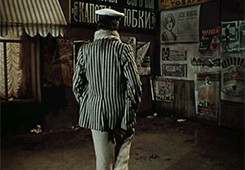

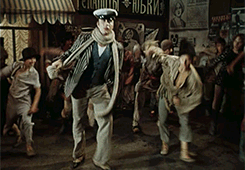
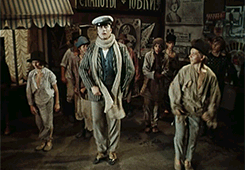
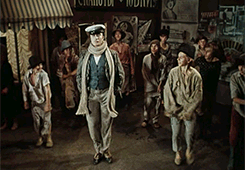

#twelve chairs#12 chairs#dvenadtsat stulyev#ostap bender#great combinator#andrei mironov#двенадцать стульев#ilf and petrov#ilya ilf#yevgeny petrov#u.s.s.r. cinema#u.s.s.r. actor#russian cinema#russian actor#soviet cinema#comedy#dance#gif#mr. stolz
94 notes
·
View notes
Text
Review : The Courier (2021)

Watching the way that Marvel Studios has engulfed the world of cinema has been interesting to say the least, with the strangest aspect of all being the seeming endless reach the studio has in terms of casting. The fraternity of award-winning blockbuster actors and actresses that have joined the fold is stunning, and as the property list expands, the list of holdouts gets shorter and shorter. With Doctor Strange standing as one of my favorite characters, for example, my viewing of Benedict Cumberbatch has become skewed... I know that he had a very successful career prior to the Doctor Strange film, including being cast as the iconic Sherlock Holmes, but I was largely unaware of him, which makes my experience of his post-Marvel career flipped from the norm. Maybe that’s why I jumped at the opportunity to check out The Courier, as it would give me a chance to see a different side of Cumberbatch as an actor.
youtube
In the wake of World War II, the nuclear threat was a very real thing, and The Courier (in my estimation) manages to capture the spirit of the tension that existed between the U.S.S.R. and the United States of America during the pre-Cold War era to a tee. Via news footage, recreations of key events and press conferences, we are drawn a clear timeline of where were are in the midst of the Cuban Missile Crisis, but not to a point that we lose focus on the specific drama surrounding Greville Wynne and Oleg Penkovsky. As an American, I am used to seeing these events through the lens of John F. Kennedy and the American perspective, so having this view shifted to that of a Russian whistleblower aided by a British businessman makes the harrowing story instantly much more refreshing, with our connection to this set of events being similar to that of Emily Donovan’s CIA presence. Most important of all, the film does a great job of making sure the audience is clearly aware of just how high the stakes are, and how serious the punishment would be for those caught taking part in the actions presented.
As important as the historical aspect of this film is, where it really comes to life is in the realm of espionage. It is nearly impossible to not feel the same weight of secrecy that Greville Wynne is burdened with, especially in light of the fact that the repercussions for error ring on a world-threatening level. Even the most hardened agents find jobs like these difficult, and without being heavy-handed, the film shows how devastating the impact is on the psyche for an amateur involved in such drastic operations. The ripple effect that fans out and impacts his relationship with his wife, his family dynamic and his personal disposition is also handled with great care, further tightening the screws on our emotional connection to Wynne. When the pressure gets extremely high, the film appropriately manages to communicate the extreme levels of paranoia that Wynne and Penkovsky existed within, while also showing how monumental a task it was to act normal in the face of such paranoia. When everything comes to a head via the third act prison scenes, one must question their humanity if they don’t feel these sequences in their gut.
The dark and shadowy world of espionage is brought to life by way of a masterful mixture of high contrast, low light photography that infuses a deeply unsettling mood into the film. The majority of the film is a mostly straight-forward affair in terms of cinematography, with framing of key events and characters sitting in the position of importance, but when the film does choose to exude showmanship in this realm, the crane moves, long lenses, variable focus depth and expressionist chiaroscuro employed pop with great force. The editing has a purposeful thrust that is implemented in a very subdued manner in spite of its brilliance and confident strength. The period costuming is all incredibly believable across the board, be it businessman, state employees, military figures or even civilians. The mostly traditional symphonic score is boosted by touches of Soviet-influenced portions that heighten the overall experience of the film.
I may be jumping out on a limb here, but I’d be willing to predict that Benedict Cumberbatch may be receiving some nominations this upcoming award season for digging deep into his dramatic bag, showing very believable versions of fear, deceptive belief, paranoia and despair with equal measure. Merab Ninidze also digs deep into the paranoia as a man burdened by world-breaking secrets, and he offsets it with a pure unconditional love for his family that makes his third act extremely powerful. Rachel Bronsnahan brings an interesting G-Man energy to her role while also realizing that her role requires her to have a large presence in measured appearances, resulting in dignified stances supported by genuine empathy. Jessie Buckley gives a seemingly reserved performance that plays as understated in the wake of events presented, but when the infidelity her character faced in the past is put on the table, it shifts her tone to one of a cautious woman questioning her capacity to love in the face of secrecy. Kirill Pirogov is wonderfully menacing in his coiled snakelike approach to being a high ranking KGB officer who gleefully brandishes his ability to capture, torture and kill like a poorly concealed weapon. Performances by Angus Wright, Željko Ivanek, Anton Lesser, Maria Mironova and Vladimir Chprikov also stand out.
Of all the films I’ve seen so far from 2021, this is the first that I could see garnering some awards season buzz for its technical aspects, and perhaps even a nomination for Benedict Cumberbatch for Best Actor. Regardless of whether or not this film is adorned with awards, it is a top tier historical drama, and certainly one worth seeking out. At some point in the future, I hope to see this on the big screen, as I am sure it will only enhance the experience.
#ChiefDoomsday#DOOMonFILM#DominicCooke#TheCourier#BenedictCumberbatch#MerabNinidze#RachelBronsnahan#JessieBuckley#AngusWright#ŽeljkoIvanek#KirillPirogov#AntonLesser#MariaMironova#VladimirChuprikov
3 notes
·
View notes
Photo

The artistic Paul Robeson
Early Years
Paul Leroy Robeson was born on April 9, 1898, in Princeton, New Jersey, to Anna Louisa and William Drew Robeson, an escaped slave. Robeson's mother died from a fire when he was six and his clergyman father moved the family to Somerville, where the youngster excelled in academics and sang in church.
Star Athlete and Academic
When he was 17, Robeson earned a scholarship to attend Rutgers University, the third African American to do so, and became one of the institution's most decorated students. He received top honors for his debate and oratory skills, won 15 letters in four varsity sports, was elected Phi Beta Kappa and became his class valedictorian.
From 1920 to 1923, Robeson attended Columbia University's Law School, teaching Latin and playing pro football on the weekends to pay tuition. In 1921, he wed fellow Columbia student, journalist Eslanda Goode. The two would be married for more than 40 years and have a son together in 1927, Paul Robeson Jr.
Robeson briefly worked as a lawyer in 1923 but left after encountering severe racism at his firm. With the encouragement of Eslanda, who would become his manager, he turned fully to the stage.
Early Roles: 'All God's Chillun' and 'Emperor Jones'
Robeson made a splash in the theater world as the lead in the controversial 1924 production of All God's Chillun Got Wings in New York City, and the following year, he starred in the London staging of The Emperor Jones—both by playwright Eugene O'Neill. Robeson also entered film when he starred in African American director Oscar Micheaux's 1925 work, Body and Soul.
'Show Boat' and 'Ol' Man River'
Although he was not a cast member of the original Broadway production of Show Boat, an adaptation of an Edna Furber novel, Robeson was prominently involved in the 1928 London production. It was there that he first earned renown for singing "Ol' Man River," a song destined to become his signature tune.
'Borderline,' 'Othello' and 'Tales of Manhattan'
In the late 1920s, Robeson and his family relocated to Europe, where he continued to establish himself as an international star through big-screen features such as Borderline (1930).
He starred in the 1933 movie remake of The Emperor Jones and would be featured in six British films over the next few years, including the desert drama Jericho and musical Big Fella, both released in 1937. During this period, Robeson also starred in the second big-screen adaptation of Show Boat (1936), with Hattie McDaniel and Irene Dunne.
Robeson's last movie would be the Hollywood production of Tales of Manhattan (1942). He criticized the film, which also featured legends like Henry Fonda, Ethel Waters and Rita Hayworth, for its demeaning portrayal of African Americans.
Having first played the title character of Shakespeare's Othello in 1930, Robeson again took on the famed role in the Theatre Guild's 1943-44 production in New York City. Also starring Uta Hagen, as Desdemona, and José Ferrer, as the villainous Iago, the production ran for 296 performances, the longest-running Shakespeare play in Broadway history.
Activism and Blacklisting
A beloved international figure with a huge following in Europe, Robeson regularly spoke out against racial injustice and was involved in world politics. He supported Pan-Africanism, sang for Loyalist soldiers during Spain's civil war, took part in anti-Nazi demonstrations and performed for Allied forces during World War II. He also visited the Soviet Union several times during the mid-1930s, where he developed a fondness for Russian folk culture. He studied Russian, as did his son, who came to reside in the capital city of Moscow with his grandmother.
Yet Robeson's relationship with the U.S.S.R. became a highly controversial one, his humanitarian beliefs seemingly contrasting with the state-sanctioned terror and mass killings imposed by Joseph Stalin. In the United States, with McCarthyism and Cold War paranoia looming large, Robeson found himself contending with government officials looking to silence a voice who spoke out eloquently against racism and had political ties that could be vilified.
Fueled by the misrepresentation of a speech the actor made at the U.S.S.R-backed Paris Peace Conference in the late 1940s, Robeson was labeled a communist and was staunchly criticized by government officials as well as some African American leaders. He was ultimately barred by the State Department from renewing his passport in 1950 to travel abroad for engagements. Despite his immense popularity, he was blacklisted from domestic concert venues, recording labels and film studios and suffered financially.
Later Years, Book & Death
Robeson published his autobiography, Here I Stand, in 1958, the same year that he won the right to have his passport reinstated. He again traveled internationally and received a number of accolades for his work, but damage had been done, as he experienced debilitating depression and related health problems.
Robeson and his family returned to the United States in 1963. After Eslanda's death in 1965, the artist lived with his sister. He died from a stroke on January 23, 1976, at the age of 77, in Philadelphia, Pennsylvania.
Paul Robeson's Legacy
In recent years, efforts have been made by various industries to recognize Robeson's legacy after a period of silence. Several biographies have been written on the artist, including Martin Duberman's well-received Paul Robeson: A Biography, and he was inducted posthumously into the College Football Hall of Fame. In 2007, Criterion released Paul Robeson: Portraits of the Artist, a box set containing several of his films, as well as a documentary and booklet on his life. (source)
15 notes
·
View notes
Quote
The voice actor ... attempted to disguise his identity by wearing a nose clip. This made Stallone, Schwarzenegger, Van Damme, and their girlfriends all sound a bit like Smithers from The Simpsons. ... [M]illions of people across the U.S.S.R. knew their nasal voices for their illegal-film dubbing. They remain unsung heroes.
The Bootleg Video Vans of the Soviet Union - The Atlantic
Like Uber but for watching Porky’s behind the Iron Curtain
(Hey Siri? Name me an illicit thing you can’t do in an old van.)
4 notes
·
View notes
Link
[...]
That's because her father, George Tynes, was an African American agronomist from Virginia who moved to Russia in the 1930s.
Tynes was among hundreds of blacks who traveled to the Soviet Union in the two decades after the 1917 Russian Revolution. Some were hard-core Communists. Others were curious adventurers.
"My father didn't know anything about this country. He didn't know what to expect," said Tynes-Mensah, 73, her mind flying back through the decades as she sat in her Moscow apartment, where black-and-white photos of her parents and children shared space on an antique sideboard with color shots of her grandchildren.
"Everybody who would come to the Soviet Union from America, my father would tell them, 'Please don't forget to bring me some records,' " Tynes-Mensah said. "He loved Ella Fitzgerald, Duke Ellington, Paul Robeson. But he also loved classical music and opera and ballet."
Most of the African Americans who came to Russia were seeking a better life, desperate to flee the social inequality and Depression-era hardships that racked America at the time, said Allison Blakely, professor emeritus of history at Boston University who has written a book on the African American immigrants.
"They were looking for a society where they could escape color prejudice and racism," Blakely said.
Today, fewer than 50 descendants of these African Americans are believed to still live in Russia. In all, their numbers in the former Soviet republics could be between 100 and 200, according to researchers.
They have become footnotes to African American and Russian history, said Yelena Demikovsky, a New York-based Russian film director and researcher who is making a movie, "Black Russians — The Red Experience," about the immigrants to the Soviet Union and their descendants.
Officials actively recruited skilled foreign laborers and professionals, Blakely said. About 18,000 Americans answered the call to work in the 1930s, he said. Among them were several hundred African Americans who traveled to the Soviet Union, including dozens who lived there for "the good part of a decade," Blakely said.
Their ranks included graduates of historically black colleges such as Tuskegee University in Alabama and Virginia's Hampton Agricultural and Industrial School, later called the Hampton Institute. They were engineers, educators, entertainers, journalists, lawyers. The actor-activist Paul Robeson and poet Langston Hughes were among those travelers captivated by communism.
The Soviets gave the African Americans red-carpet treatment, including fat paychecks, subsidized housing and free vacations.
"My father felt the U.S.S.R. treated him better than America," said Tynes-Mensah, a former university chemistry instructor who was born in the Russian town of Krasnodar and now lives mainly in the United States, spending summers in Russia. "He was happy here."
A graduate of Wilberforce University in Ohio and a former college football star, Tynes could only find work washing dishes in a restaurant back in America, his daughter recalled. So he jumped at the opportunity to go to Russia, although he never joined the Communist Party, his daughter said.
Tynes was among 11 African American agricultural specialists led by Oliver Golden, an agronomist and Communist from Mississippi, who boarded the German ship Deutschland bound for the Soviet Union in 1931.
Oliver Golden's granddaughter, Yelena Khanga, 52, a Moscow-based talk show host, recalled how American Communist leaders and black dignitaries visiting Russia would make the Golden household their first stop.
The conversation usually centered on the plight of African Americans, the poor and the working class. Khanga — a world traveler with fans from her high-profile TV job, a swank flat near Red Square and a driver — said she considered such talk "so strange."
"I would think, 'Why are we discussing the situation of working-class people in Chicago when we'll never be in Chicago?' " she said.
The experience of African Americans who traveled to or settled in Russia was overwhelmingly positive, descendants said. In turn, they made valuable contributions to Soviet society, said Blakely, the professor. Agricultural specialists helped devise different uses for materials, such as rope made from hemp. They also helped develop plant species that were cheaper to cultivate. Their contributions provided a boost to the Soviet economy.
Tynes, who was sent to various Soviet republics to teach people how to raise ducks and other waterfowl, became a nationally recognized expert on poultry. Golden helped develop a cotton industry in Uzbekistan. And the African Americans introduced Russians to blues and jazz.
"They had an impact disproportionate to their numbers because they were there precisely because the Soviet leadership was trying to use them as a symbol of what they were trying to build in terms of a truly democratic society," Blakely said. "They were very much in the public eye."
Within years, however, such attention was unwelcome. During the era of Josef Stalin's purges, foreigners were viewed with suspicion and non-Soviet citizens were ordered to leave the country, said Demikovsky, the filmmaker.
Khanga said her grandfather escaped being nabbed by the secret police by a fluke. He was away from home the day they came for him. When Golden dutifully turned himself in, he was informed that the quota of arrests for his area had been fulfilled, Khanga said.
The African Americans were shunned during the Cold War, but it was because they were foreigners, not because they were black, their descendants said. But attitudes toward blacks changed in the1960s with the influx of thousands of students from Africa.
Tynes-Mensah, whose mother was Russian-Ukrainian, said she was keenly aware when she was growing up that she was different.
"I was afraid to go out in public," said the septuagenarian, who has cafe-au-lait skin and a short Afro. "People used to stare. But it was curiosity. They were not angry or aggressive like they are now."
Today, the acceptance of blacks in Russia is far lower compared with what the African American pioneers experienced, said Tynes-Mensah, who runs a nonprofit called Metis that offers support to mixed-race children, the majority of whose fathers came to Russia from Africa.
"Afro-Russians want to feel Russian, but the society doesn't want to recognize them as Russian," she said. "Sometimes [people] will say, 'Go back to Africa.' "
Khanga, a vivacious and charismatic woman who was raised on the gospel songs of Mahalia Jackson and Aretha Franklin, said any obstacles she faced growing up in Russia during the Cold War years were because of her American heritage, not her race.
"I feel comfortable as a black person in Russia," said Khanga, who is married to a white Russian and has a 12-year-old daughter.
[...]
#black russians#blacks in ussr#blacks in soviet union#black communism#black expatriots#communism#socialism#segregation#jim crow
5 notes
·
View notes
Text

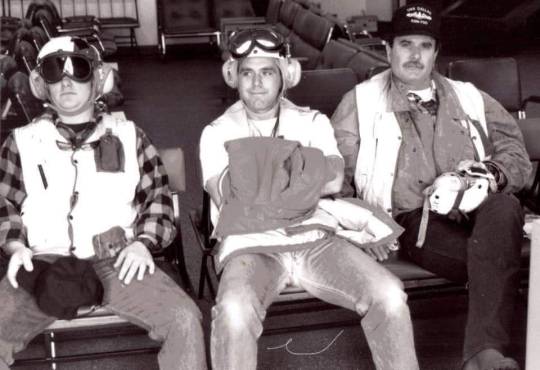

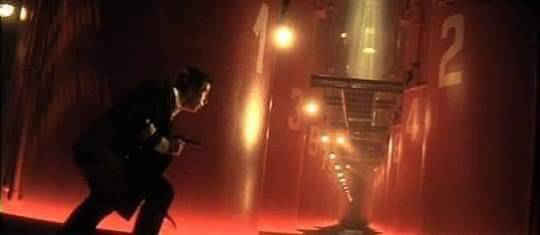




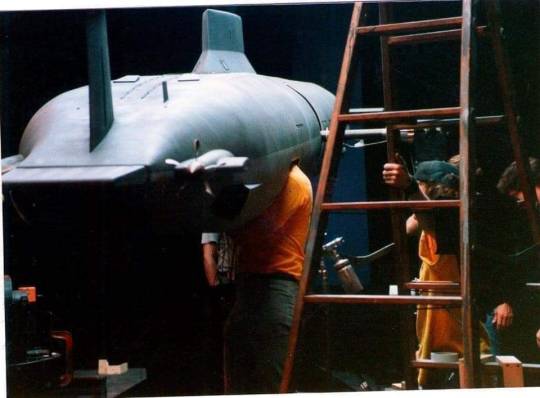

On this date in 1990 “The Hunt For Red October” was released!
Capt. Borodin: “The crew know about the saboteur. They are afraid.”
Marko Ramius: “Well, that could be useful when the time comes.”
Director:John McTiernan
1st AD:Jerry Ballew
Cinematographer:Jan de Bont
Camera operator:Roger Gebhard
1st AC:Cal Roberts
Production Designer:Terence Marsh
Gaffer:Ed Ayer
Key grip:Larry J. Aube
Dolly grip: Michael J. Coo
This is one of my favorite movies so today we’re going on a deep Dive! Dive! Dive! on how this group of dedicated filmmakers brought this movie to life.
The producers originally wanted Kevin Costner for the lead, but Costner had other ideas.
As producer Mace Neufeld explained in a behind-the-scenes DVD feature, "I'd gotten quite friendly with Kevin Costner, and I went to Kevin about playing Jack Ryan. But Kevin was up to his neck, and very enthusiastic, about doing this ... this buffalo movie. And I said, 'You'd rather do a buffalo movie?'".
This was Alec Baldwin’s first big budget starring role throwing himself face first into the role spending time with C.I.A agents and spending the night 600’ underwater in a submarine. He also recommended he personally do the helicopter drop into the ocean. Baldwin accepted the role of Jack Ryan because Harrison Ford turned it down. Cast member Sam Neill also benefited from Ford's refusal three years later by being cast in the lead role of Jurassic Park (1993). Interestingly, Baldwin asked for a big pay increase for the sequel, to which the producers allegedly replied, "For that price, we could get Harrison Ford." Baldwin held his ground and the studio agreed to the fee, but for Ford instead of Baldwin for “clear and present danger”
Sean Connery was a last-minute replacement. The film had been in production for two weeks when word came that Klaus Maria Brandauer (Out of Africa), the Austrian actor who'd been signed to play the rogue Soviet sub commander Marko Ramius, couldn't do it after all because of a prior commitment. Connery took the part instead, needing only one day for rehearsal. Coincidentally, he and Brandauer had acted together in 1983's “Never Say Never Again” and would reunite again for 1990's “The Russia House”, which was shot shortly after The Hunt for Red October.
Mancuso: The hard part about playing chicken is knowin' when to flinch.
"I had reservations about it," Connery told an Associated Press reporter upon the film's release. "I thought this kind of Cold War intrigue might be dated because of recent events(the fall of the U.S.S.R). It turned out that the studio had failed to fax the first page of the script, which explained that it took place before Gorbachev." This is probably why no one ever uses fax machines anymore. After being faxed the script, Sir Sean Connery initially turned the role down on the basis of the plot being unrealistic for the post-Cold War era. Whoever sent the fax neglected to include the foreword, explaining the movie as historical. Once he received the foreword, Connery accepted the role.
After consulting with the hair department behind director John McTiernan's back, Sir Sean Connery arrived on-set for his first day of principal photography with his hairpiece incorporating a ponytail. Several years later, once Connery's potential influence had greatly waned, McTiernan stated in an interview with Sight & Sound Magazine that he was "f---ing livid" with Connery, and that the Scottish actor tried to use his considerable heft with the studio, going over the director's head to pass the alteration with producers. It seemed as though Connery was to get his way until midway through the second day's shooting, when director of photography Jan De Bont started laughing while reviewing the dailies, remarking to Connery that his ponytail looked like "a limp, swinging d--k." This soon became a meme among the crew, and by the end of the second day, Connery was so upset at the mockery, he relented, having the hair department remove the alteration and forcing the re-shoot of a key scene. McTiernan joked that the reported cost of the hairpiece, approximately $20,000, was mainly down to the cost of those subsequent re-shoots.
Jeffrey Pelt: “Listen, I'm a politician, which means I'm a cheat and a liar, and when I'm not kissing babies, I'm stealing their lollipops, but it also means that I keep my options open.”
Screenwriter Larry Ferguson played the role of C.O.B. [Chief (Petty Officer) of the Boat] on the U.S.S. Dallas. He didn’t know he had been cast till he saw his name on the cast list and quickly hired an acting coach having not acted in over 16 years, he quickly started rewrites giving his character more screen time.
The film got an uncredited rewrite—including all of the Russian dialogue—from veteran filmmaker John Milius. The writer of “Apocalypse Now”, and director of “Conan the Barbarian”, and “Red Dawn”—who had directed Connery in 1975's “The Wind and the Lion”—told an interviewer in 2003 that the rumors of his involvement with The Hunt for Red October were true. He said he added speeches for Connery's character ("Make it about me," the actor supposedly told him), and that he "wrote all of the Russian stuff—everything that's Russian in that movie."
In one of the most clever ways I’ve seen a movie ditch the subtitles, this film begins with the actors speaking Russian with English subtitles. As the camera slowly dollies to the mouth of actor Peter Firth he casually switches in mid-sentence from Russian to English on the word "Armageddon", which is the same spoken word in both languages. After that point, the Soviets' dialogue is communicated in English.
During filming, several of the actors portraying U.S.S. Dallas crewmen took a cruise off the coast of San Diego on the USS Salt Lake City (SSN-716) a real Los Angeles-class submarine. To train for his role as the Dallas' commander, Scott Glenn. The real commander Thomas Fargo of the Salt Lake City ordered his crew to treat Glenn as equal rank, first giving reports to him, then give the same report to Glenn. Glenn based his performance of Mancuso on Commander Fargo, giving orders in a calm even voice, even in tense situations, saying "whatever good happened in the performance, basically I owe to now Admiral Fargo, thank you sir."
Made before sophisticated CGI became the norm in filmmaking, the film's opening sequence featured a long pull-out reveal of the immense titular Typhoon-class sub. It included a nearly full-scale, above-the-water-line mockup of the sub, constructed from two barges welded together. Since they didn’t have permission to go out to open ocean they were forced to shoot in Long Beach harbor to create the wake of the open ocean they had boats circling the barge to create waves.
Production designer Terence Marsh and Cinematographer Jan de Bont didn’t want to confuse the audience so they gave each country's submarine its own background color: Soviet submarines, such as Red October and V.K. Konovalov, had interiors in black with chrome trim. American ships, such as Dallas and Enterprise, had grey interiors. To help the audience quickly grasp which sub's interior they were seeing as the movie jumped from scene to scene and sub to sub, the filmmakers also created a subtle lighting scheme: blue for Red October, green for the Alfa class "V.K. Konovalov", and red for Dallas.
During filming in 1989, the U.S.S. Houston, which doubled for the U.S.S. Dallas in the movie, snagged the tow cable between the commercial tugboat Barcona and a barge, sinking the tugboat ten miles off Long Beach, California. One crewman unfortunately drowned, and two more were rescued.
On stage for the sub interiors two 50-square-foot (4.6 m2) platforms housing mock-ups of Red October and Dallas were built, standing on hydraulic gimbals that simulated the sub's movements. Connery recalled, "It was very claustrophobic. There were 62 people in a very confined space, 45 feet above the stage floor. It got very hot on the sets, and I'm also prone to sea sickness. The set would tilt to 45 degrees.
I asked the Dollygrip on the film and crew stories member Micheal Coo about his experience on the and he shared this with us.
“ I’ve got a story for you...
We were shooting in a real submarine and doing a tracking shot down a long corridor. Now about every 15 feet is a bulkhead that you have to step over and make sure you don’t hit your head on the top. We are tracking on a peewee dolly, raised up on track to clear the bulkheads, chasing Sean Connery down the corridor. While chasing Sean, Jan Debont yells cut cut cut, and stands up. There’s no way I could stop on a dime and Jan stood up right before one of the bulkheads. He hit his head so hard he flew over the top of me and I went under him with the dolly. His head sounded like a church bell ringing in the submarine. Since Jan Debont and Sean Connery didn’t get a long so well Sean laughed his ass off at Jan laying there on the floor saying “Fucking Hell Shit Michael, I said cut!!!”
The miniature “underwater” scenes were shot and built by I.L.M and the talented model makers from BOSS films Gregory Jein, John Eaves, Ron Gress and Alan McFarland, they filmed using smoke to simulate underwater with a model sub connected to a 12 cable marionette style frame, giving precise, smooth control for turns the same technique was used for the robot aliens in the film “Batteries not included”. To get the lens to “scrape the paint” of the model to make it feel life sized the crew used mirrors lined up perfectly and the camera lens shoot into the mirror getting the image much closer then it would have been possible for the camera. With Computer generated effects, in their infancy, cgi was used for creating bubbles and other effects such as particulates in the water.
Navy recruiters set up booths in some theater lobbies for people to sign up to join the service, or to at least look into it. The Pentagon hoped that this movie would do for the submarine service what Top Gun (1986) did for Naval aviation.
When the movie was first released on VHS in 1991, the tapes were red.
Capt. Marko Ramius: I'm reminded of the heady days of Sputnik and Yuri Gagarin when the world trembled at the sound of our rockets. They will tremble again at the sound of our silence. The order is engage the silent drive.
If you can help identify any crew members please comment, thanks for reading
Via Diego,IMDb, YouTube,MCGA. Special thanks to Dolly Grip on the film Michael Coo and miniatures paint expert Bruce Hazumi
2 notes
·
View notes
Text
ELECTION DAY (UNITED STATES)
Tuesday, November 3, 2020: Election Day (United States)
By an act of Congress in 1845, the first Tuesday following the first Monday in November was designated Election Day for future presidential elections.
The first such election took place on November 7, 1848. Whig Party candidate Zachary Taylor won out over Democrat Lewis Cass and Free-Soil candidate (and former president) Martin Van Buren.
Taylor’s running mate was Millard Fillmore, who became the nation’s 13th president on July 10, 1850, upon Taylor’s untimely death.
1790s
BORN 1794: WILLIAM CULLEN BRYANT (POET)
1800s
BORN 1801: VINCENZO BELLINI (COMPOSER)
1810s
1817: CANADA'S FIRST CHARTERED BANK, BANK OF MONTREAL, OPENED IN QUEBEC
1860s
1868: ULYSSES S. GRANT ELECTED PRESIDENT OF THE U.S.
1880s
1883: IN CALIFORNIA, THE POET AND OUTLAW CALLING HIMSELF "BLACK BART" MADE HIS LAST ROBBERY WHEN HE STOLE A WELLS FARGO STRONGBOX FROM A STAGECOACH. A HANDKERCHIEF LEFT AT THE SCENE LED TO HIS ARREST
1900s
1900: THE FIRST AUTOMOBILE SHOW IN THE UNITED STATES OPENED AT NEW YORK'S MADISON SQUARE GARDEN UNDER THE AUSPICES OF THE AUTOMOBILE CLUB OF AMERICA
BORN 1903: WALKER EVANS (PHOTOGRAPHER)
1908: WILLIAM HOWARD TAFT ELECTED AS PRESIDENT OF THE U.S.
1910s
1914: MARY JACOB RECEIVED A PATENT FOR A BRASSIERE
1920s
BORN 1921: CHARLES BRONSON (ACTOR)
DIED 1926: ANNIE OAKLEY (SHARPSHOOTER)
1930s
1930: DETROIT-WINDSOR TUNNEL OPENED
BORN 1933: MICHAEL DUKAKIS (POLITICIAN)
1936: PRESIDENT FRANKLIN D. ROOSEVELT REELECTED FOR SECOND TERM
1940s
BORN 1949: LARRY HOLMES (BOXER)
1950s
BORN 1953: KATE CAPSHAW (ACTRESS)
DIED 1954: HENRI MATISSE (ARTIST)
1957: THE U.S.S.R. LAUNCHED SPACE SATELLITE SPUTNIK II, CARRYING A DOG
1960s BORN 1960: CHARLES KIRALY (VOLLEYBALL CHAMPION)
1970s
1973: MARINER 10 SPACECRAFT LAUNCHED, CAPE CANAVERAL, FLORIDA
1975: GOOD MORNING AMERICA DEBUTED WITH CO-HOSTS DAVID HARTMAN AND NANCY DUSSAULT
1990s
DIED 1990: MARY MARTIN (ACTRESS)
1992: ARKANSAS GOVERNOR BILL CLINTON WAS ELECTED 42ND PRESIDENT OF THE US.
FIVE WOMEN WON SENATE SEATS, INCLUDING DEMOCRAT CAROL MOSELEY-BRAUN, WHO BECAME THE FIRST AFRICAN-AMERICAN WOMAN SENATOR
DIED 1998: BOB KANE (CREATOR OF THE COMIC, BATMAN)
2010s
BORN 2010: GIANT PANDA CUB AT ZOO ATLANTA
DIED 2011: BOB FORSCH (BASEBALL PITCHER)
2013: TOTAL ECLIPSE OF THE SUN.
DIED 2014: TOM MAGLIOZZI (CO-HOST OF CAR TALK NPR NATIONAL RADIO PROGRAM, RUN WITH HIS BROTHER RAY)
2019: U.S. AIR FORCE'S UNCREWED X-37B ORBITAL TEST VEHICLE MISSION 5 LANDED AT NASA'S KENNEDY SPACE CENTER IN CAPE CANAVERAL, FLORIDA. THE SPACE PLANE HAD SPENT 780 DAYS IN ORBIT, BREAKING THE PREVIOUS RECORD OF 718 DAYS IN 2017.
WILL ROGERS DAY
Will Rogers, a great American humorist, was born in what would become Oklahoma in 1879. Starting life on a large ranch in Indian territory, Rogers was part Cherokee.
He was taught by a former slave how to use a lasso as a tool to work Texas longhorn cattle. He became a rope-tricking cowboy and all-around entertainer and his rope tricks eventually led to a career on Broadway and in the movies. Rogers later became a popular broadcaster and syndicated newspaper columnist.
Rogers died in a plane crash in Point Barrow, Alaska, on August 15, 1935. Will Rogers had a folksy persona and some of his best quotes are still timeless. Here's a few that you should enjoy: "I don't make jokes, I just watch the government and report the facts."
"Everybody is ignorant, only on different subjects." "We can't all be heroes, because somebody has to sit on the curb and applaud when they go by." "Even if you're on the right track, you'll get run over if you just sit there."
_________________________
OPINION: Just a bit of US History.
0 notes
Photo

L’invitation au voyage (Germaine Dulac, 1927)
Meshes of the Afternoon (Maya Deren and Alexander Hammid, 1943)
.
Through experimental techniques and the exploration of narrative dream logic, filmmakers can portray the abstract as visual and physical. For many movies made by and for male viewers, the inner desires of the characters (and filmmakers) will often stop in the real of physical; any desires may find themselves embodied within the female form, resulting in such tropes as the male gaze. While it would be inaccurate to say that all male-centric films take this approach, it is widespread enough and so pervasive in the mainstream film industry that to see female filmmakers bringing their own desires into film is a refreshing and enlightening experience. Dulac and Deren (and Hammid) craft ethereal, fairytale-like narratives in order to convey complex feelings in ways which a mainstream Hollywood film would be unable to—nor would they be interested in doing so, if the women’s films of the 1930s and 1940s are any indication of the female’s place in the industry.
.
Germaine Dulac was born in Amiens, France. Dulac began writing for the feminist journal La Fronde in 1900; in 1909, she began writing for the feminist magazine La Française. Dulac wrote on women’s roles in the social and political spheres, promoting the empowerment of female figures. Dulac divorced from her husband in 1920, five years after directing her first film. As a director, she believed in the Cinéma pur (“Pure Cinema”) movement that aimed to return film to a visual, non-narrative focus. Cinéma pur techniques included superimpositions, montage, and camera movement, all aimed at expressing abstract experiences through the visual language.
.
The story of L’invitation au voyage is simple in conception, yet its emotions and execution are incredibly powerful. Unhappy with the lack of attention she receives from her husband, La Femme (Emma Gynt) goes out to a club called “L’invitation au voyage” (“Invitation to a Journey”). The club has nautical and tropical aesthetics, contrasting the dreary and simple decor of her home (reminiscent of the Red Room from Twin Peaks, 65 years later); this reflects on La Femme’s own desires of escape and craving for excitement. While initially shy, La Femme begins to open up once she meets La Marin (Raymond Dubreuil), a respectful man in a naval costume. The title cards are minimal throughout the film, as Dulac effectively utilizes the visual language of film in order to convey the mental and emotional status of the characters. The unspoken dialogue is especially effective and apparent in one early scene, when La Femme takes her seat and is approached by a waiter. The waiter hands La Femme a menu, which she attempts to read; all of the options printed are in foreign languages, such as Hebrew and Arabic. The camera then cuts to a shot of the waiter’s face as he makes various expressions; different bottles are superimposed over the right half of the frame. Through this visual technique, the waiter “talks” about the drinks which the club offers without sound or traditional dialogue. Dulac does not allow her film to be held down by the constrictions of a literary narrative, as per the core tenants of Cinéma pur. The lack of reliance of dialogue places the characters on a plane wherein the speaking role is not an important one; men often receive more lines and attention even in “women’s films.” The visuals become the primary focus, and the visuals of L’invitation au voyage put attention squarely on La Femme; Emma Gynt’s performance as a physical actor is an incredible one, as she is able to deliver her character’s complicated emotions and desires without spoken word.
.
Like Germaine Dulac, Maya Deren was a foreign-born female filmmaker; her family left the U.S.S.R. for the United States when she was five years old. Deren studied journalism and political science at university, while participating in socialist political movements at the time. She married her second husband, Czech filmmaker Alexander Hammid, in 1942, and it was with him that she filmed Meshes of the Afternoon in 1943. Deren was critical at the time of the Hollywood monopoly over American cinema, supporting independent filmmakers and their efforts.
.
Meshes of the Afternoon was originally silent, but a soundtrack was later added by Deren’s third husband, Tenji Ito, in 1959. The film’s dreamlike, repetitive narrative follows the internal process and struggles of a woman (Maya Deren). In the second iteration of the cycle, the woman follows a cloaked figure with a reflective face into the house and discovers the first, unconscious aspect of herself. The second woman turns off the record player, examines the first woman asleep, and walks to the window; the cloaked figure walks down the pathway to the house, while a third woman follows behind. The women later sit at a table, one armed with a recurring knife, seemingly for a discussion without dialogue. The woman lies down on her bed with a flower, while a man enters the home and follows her steps. Once the man comes into the bedroom, the flower becomes a knife and the woman slashes at him; the man arrives at the house, again, to find the woman dead. Many women’s films of the era often end in death (literally or metaphorically) of the female characters as punishment for little, if any transgressions; however, often death in art can be a liberation. For an ethereal, dreamlike narrative like Meshes of the Afternoon, death appears as representative of freedom from an unhealthy cycle or state of mind. When the woman kills the man, she frees herself from the idea of him, or at least an aspect of his existence, breaking away from the cycle which the film had so far built upon.
.
Both films take a female perspective, with the usage of the experimental techniques and narrative making them natural and visceral experiences. The lack of a standard or traditional narrative elevates the unspoken, at times unseen emotions of the characters and artists behind the films. The narratives are more primal and expressive in ways which many, which rely on dialogue, are unable to be; they utilize film as a visual medium, placing emphasis on the visuals and moving the sound and writing to the wayside. Using these techniques to relay the female experience is a viable, important tool for female filmmakers, as it de-powers the words which male-dominated films often use to assume positions of power; as well as re-contextualizing the female form on film as an individual rather than object. -- KR
0 notes
Photo




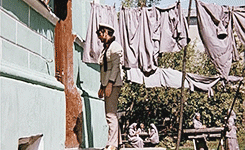


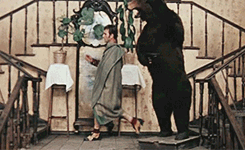
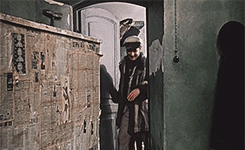
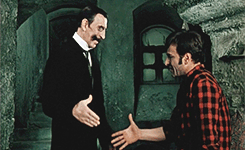
#twelve chairs#12 chairs#dvenadtsat stulyev#ostap bender#great combinator#kisa vorobianinov#archil gomiashvili#sergey filippov#двенадцать стульев#ilf and petrov#ilya ilf#yevgeny petrov#leonid gaidai#russian cinema#russian actor#u.s.s.r. cinema#u.s.s.r. actor#comedy#soviet cinema#gif#mr. stolz
61 notes
·
View notes
Link
But in her home, there was American jazz, Thanksgiving celebrations and stories of the struggles facing blacks in the United States. An improvised version of soul food sometimes replaced borscht. That's because her father, George Tynes, was an African American agronomist from Virginia who moved to Russia in the 1930s. Tynes was among hundreds of blacks who traveled to the Soviet Union in the two decades after the 1917 Russian Revolution. Some were hard-core Communists. Others were curious adventurers.
Most of the African Americans who came to Russia were seeking a better life, desperate to flee the social inequality and Depression-era hardships that racked America at the time, said Allison Blakely, professor emeritus of history at Boston University who has written a book on the African American immigrants. "They were looking for a society where they could escape color prejudice and racism," Blakely said.
Officials actively recruited skilled foreign laborers and professionals, Blakely said. About 18,000 Americans answered the call to work in the 1930s, he said. Among them were several hundred African Americans who traveled to the Soviet Union, including dozens who lived there for "the good part of a decade," Blakely said.
Their ranks included graduates of historically black colleges such as Tuskegee University in Alabama and Virginia's Hampton Agricultural and Industrial School, later called the Hampton Institute. They were engineers, educators, entertainers, journalists, lawyers. The actor-activist Paul Robeson and poet Langston Hughes were among those travelers captivated by communism. The Soviets gave the African Americans red-carpet treatment, including fat paychecks, subsidized housing and free vacations. "My father felt the U.S.S.R. treated him better than America," said Tynes-Mensah, a former university chemistry instructor who was born in the Russian town of Krasnodar and now lives mainly in the United States, spending summers in Russia. "He was happy here."
Today, fewer than 50 descendants of these African Americans are believed to still live in Russia. In all, their numbers in the former Soviet republics could be between 100 and 200, according to researchers. They have become footnotes to African American and Russian history, said Yelena Demikovsky, a New York-based Russian film director and researcher who is making a movie, "Black Russians — The Red Experience," about the immigrants to the Soviet Union and their descendants.
595 notes
·
View notes
Text
Is misinformation new?
To begin, is the spread of purposeful misinformation a new phenomenon? I believe not. The aims of misinformation are to dissuade the audience from pursuing other narratives, other than the narrative that the distributer aims to push the audience towards. An example of this is that the distributer is one who aims create and narrative which will further their parties, an example of this is:
“the fog of lies and misinformation that surrounds such subjects as the Ukraine Famine, the Spanish Civil War, Russian policy in Poland and so forth is not due entirely to conscious dishonesty, but any writer or journalist who is fully sympathetic to the U.S.S.R – sympathetic, that is, the way the Russians themselves would want them him to be – does have to acquiesce in deliberate falsification on important issues.” (Orwell 2000: 332)
This quote is taken from ‘The prevention of literature’ by George Orwell and was written in January 1946. Seventy-four years old and it is concerning the spread of untruths in the media perpetrated by dishonest actors. Orwell however does not solely blame them for their dishonesty as purely malicious creatures but more for what Carl Jung would call an ideological possession. Regardless of political affiliation, it would appear that the potential for people to write what would bolster their groups aims and disenfranchise an opponent is one that has been prevalent for near three quarters of a decade.
It may seem that new media has allowed for this trait in journalism to flourish easier than it has before. This is potentially due to the technology of ‘bots’ which some say aims “to sway opinion in ways that would influence the election” (Boyd-Barret 2019: 27) this would allow for people to be consciously dishonest to discredit others falsely with minimal human effort, on a large scale. A solution that is proposed by legislators is to “boost the autonomy of social media users as information consumers” (Boyd-Barret 2019: 54). This would mean that it is the duty of the individual user to be responsible in their spread and consumption of information.
It would appear then that the spread of misinformation is not new, it has been around for as long as one could lie. What has changed however, is the reach and accessibility to create autonomous accounts to spread misinformation which is the concern. The main issue to tackle is not the spread of it, but the origin. It appears that it originates out of ideological possession and political tribalism, the need for people to have a gain over an opponent at all costs. Even if the creators are possessed and tribalized, if the audience is of neutral/rational mind, it is likely to see a rise of responsible information consumers and less of a spread of misinformation.
Bibliography:
Orwell, George, Essays, (Penguin Classics, New Edition: 2000)
Boyd-Barret, Oliver, RussiaGate and Propaganda: Disinformation in the Age of Social Media, (Routledge: London, 2019)
0 notes